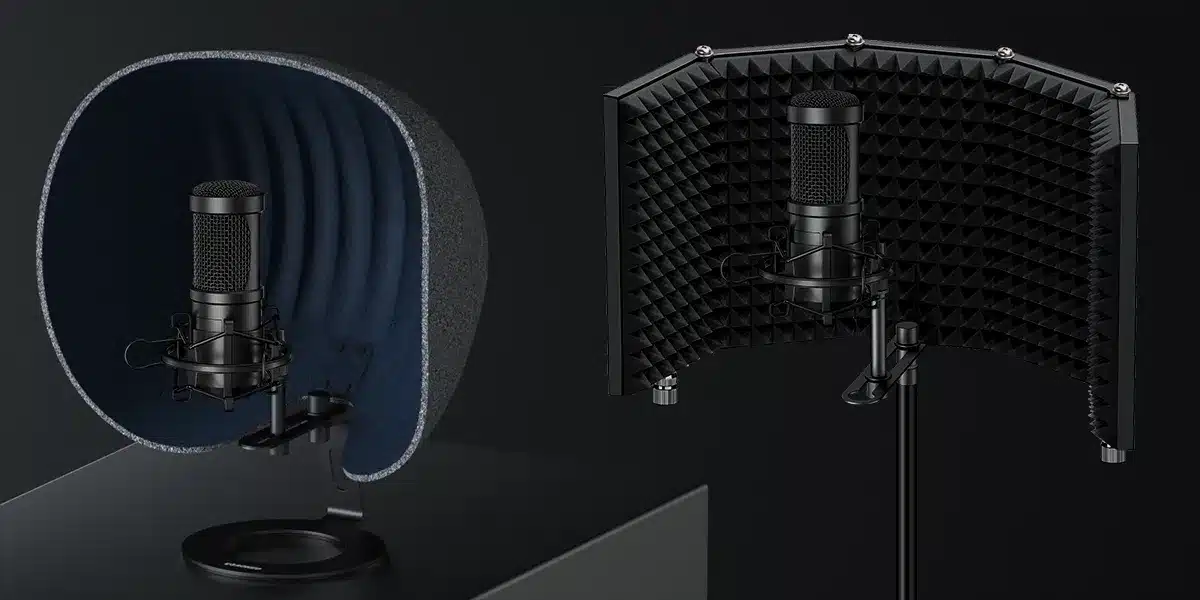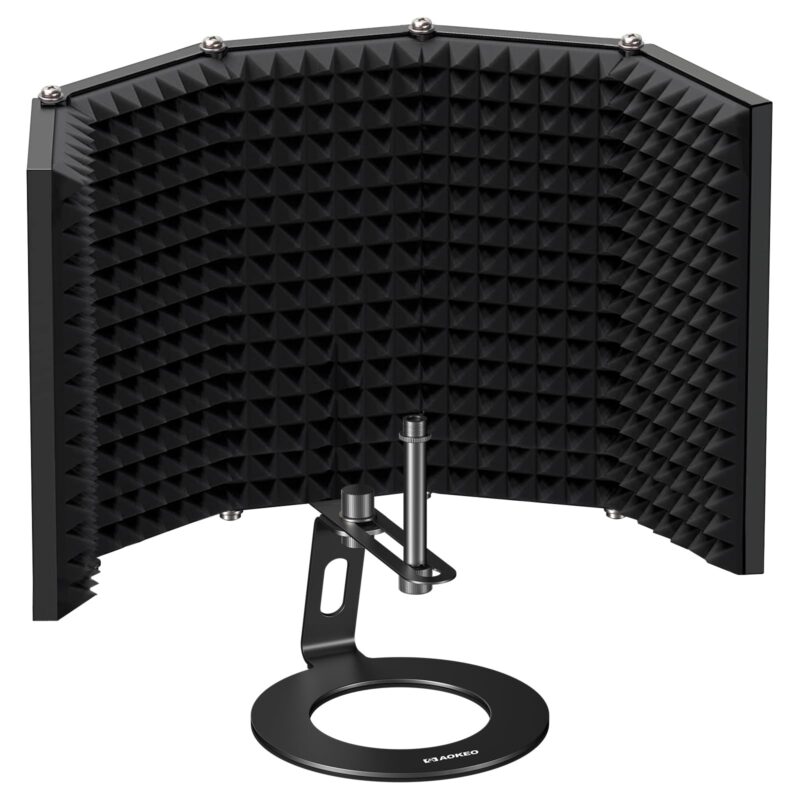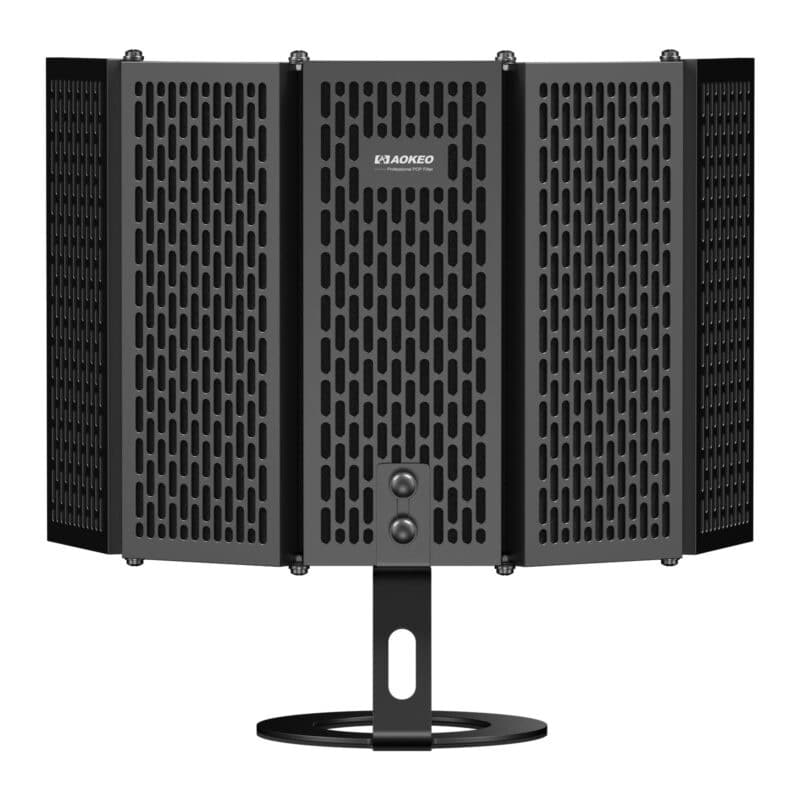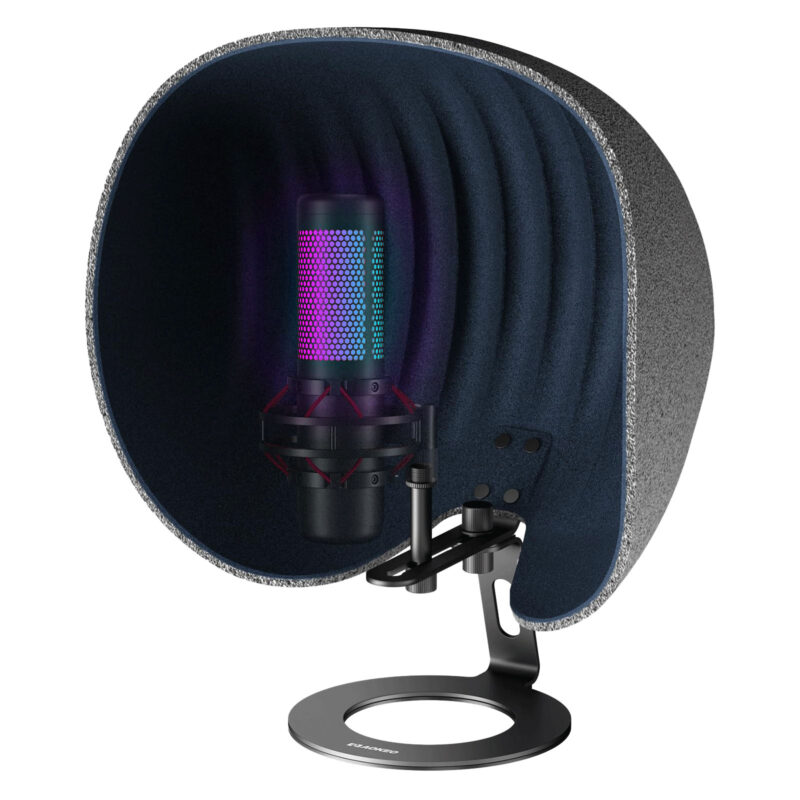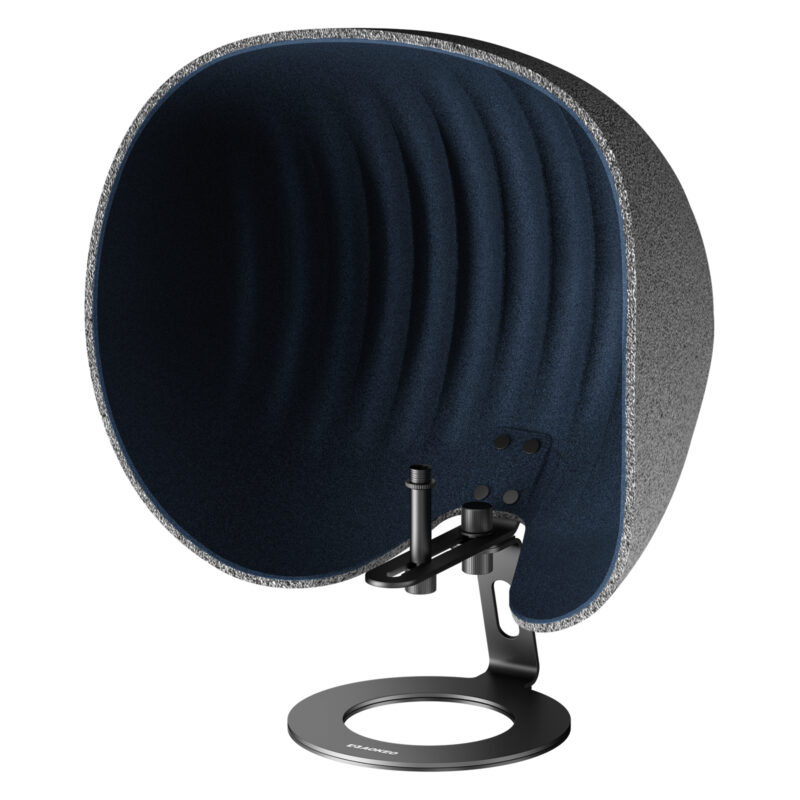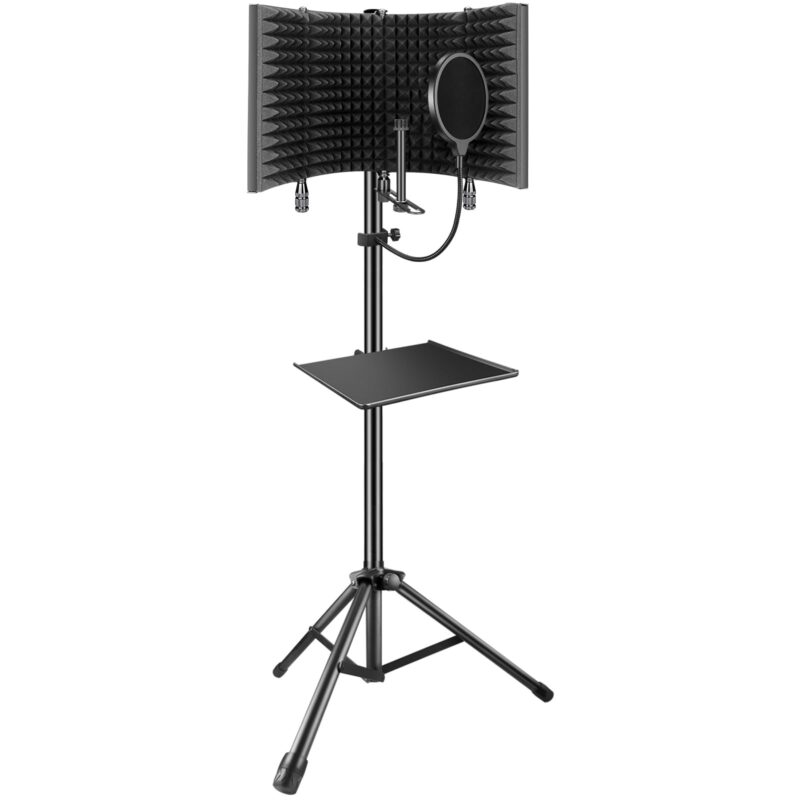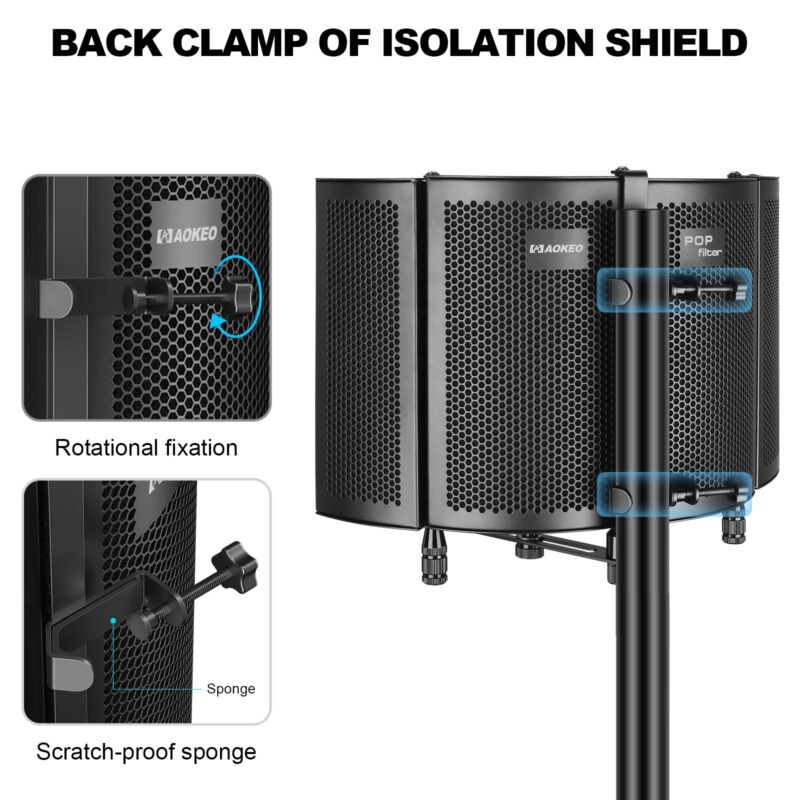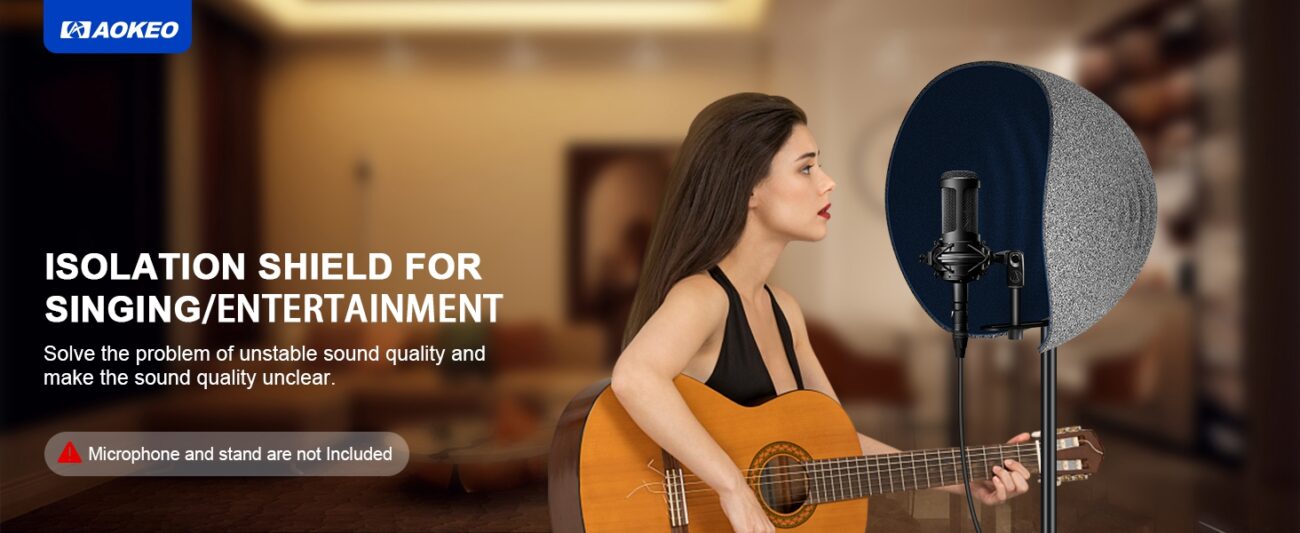Microphone Isolation Shield – Does It Really Make a Difference?
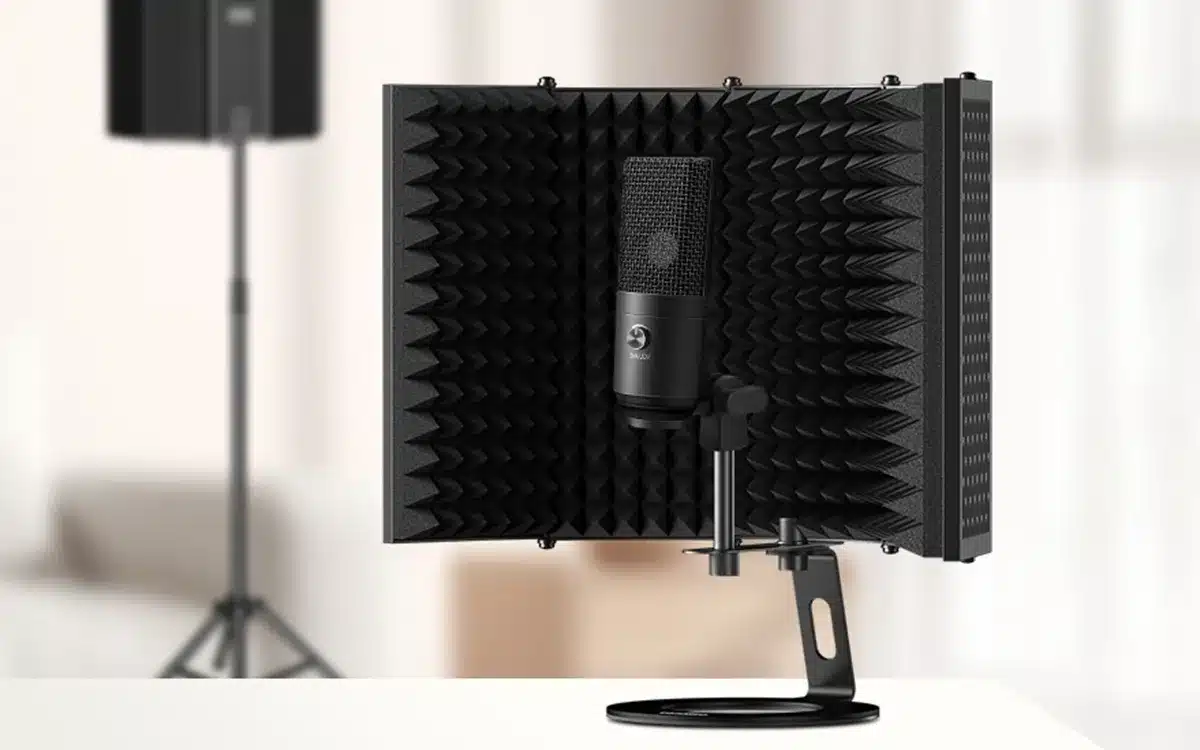
If you’re dealing with echoes and background noise in your recording area, even if you have a good mic, you won’t get the best sound quality from it.
To enhance recording convenience and improve audio quality, this article will explain what a microphone isolation shield is and why it matters. We’ll also share practical tips for choosing a high-quality mic shield that delivers professional results.
Table of Contents
What Is a Microphone Shield Called
To obtain good sound, excellent microphones are needed, as well as corresponding usage skills and microphone accessories. There are many types of audio accessories for reducing background noise, echoes, or room reflections during recordings, such as sound blankets, reflection filters, acoustic panels, and pop filters.
-
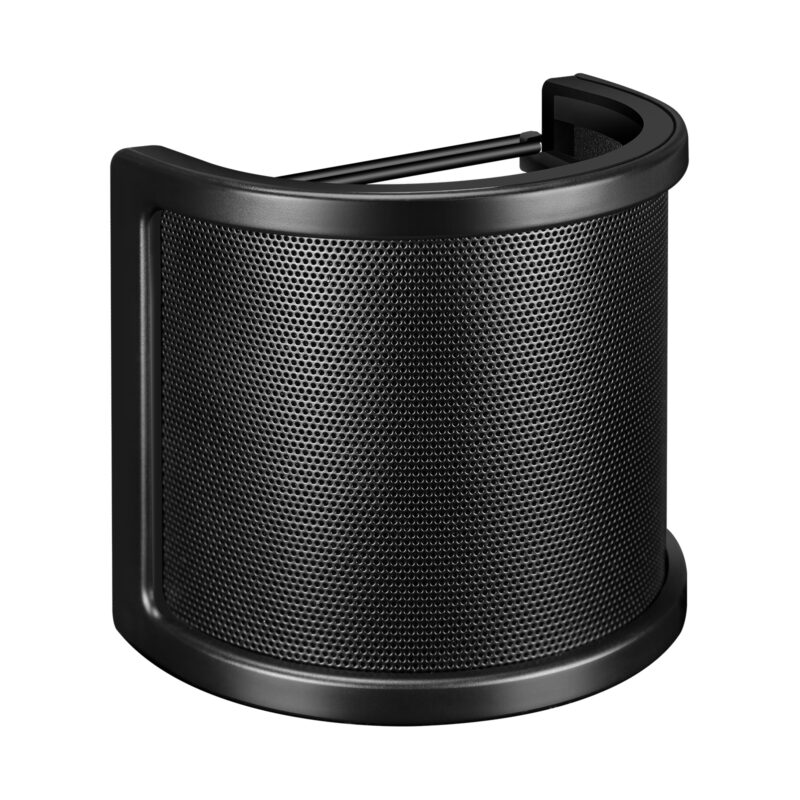 Aokeo U-pop
Aokeo U-pop
€15.99Original price was: €15.99.€9.99Current price is: €9.99. -
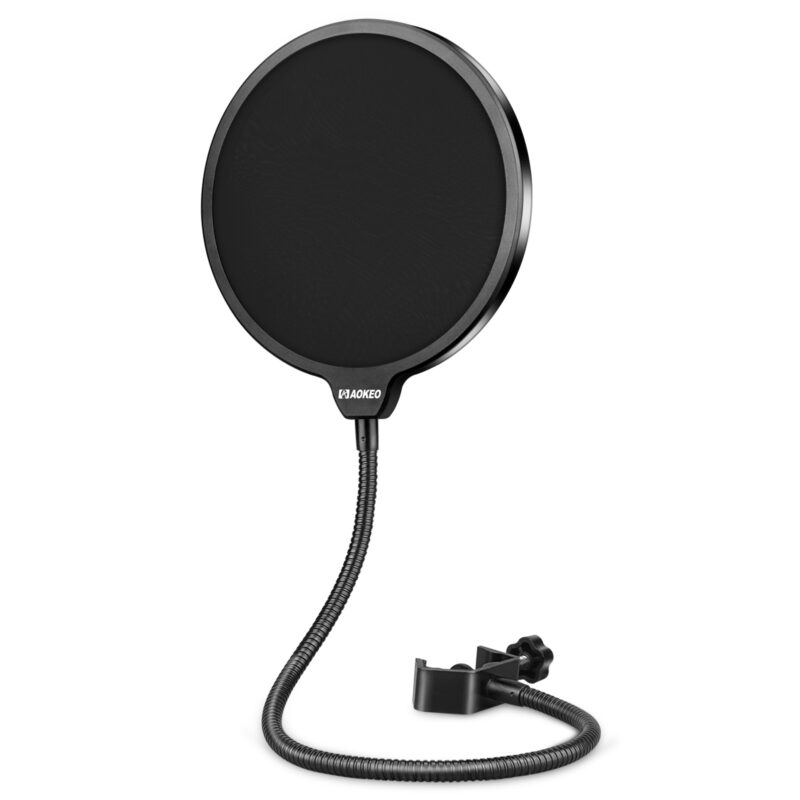 Aokeo O-Pop
Aokeo O-Pop
€19.99Original price was: €19.99.€12.99Current price is: €12.99.
Microphone isolation shield is one of the microphone accessories and it aims to reduce environmental noise during recording.
Check the comparison table below to help you choose the right tool for your specific setup.
|
Feature / Tool |
Sound Blankets |
Microphone Isolation Shield |
Pop Filter |
|---|---|---|---|
|
Primary Purpose |
Reduce echo and background noise in a room |
Block ambient noise and reflections behind the mic |
Minimize plosive sounds (like "P" and "B") |
|
Portability |
Low (large and bulky) |
Medium (portable and lightweight) |
High (small and easy to attach) |
|
Installation |
Requires hooks, stands, or clips |
Attaches to mic stand or desktop |
Clips directly onto mic stand or boom arm |
|
Cost Range |
High |
Medium |
Low |
|
Best For |
Treating entire room or space |
Improving voice clarity in untreated rooms |
Cleaning up speech sounds during close mic recording |
|
Material |
Heavy-duty quilted fabric |
Foam panels with metal shell |
Nylon mesh or metal screen |
|
Effect on Recording |
Warmer, echo-free sound |
Cleaner vocals with less ambient room sound |
Cleaner audio with fewer plosives |
|
Common in |
Home studios, voice booths, film sets |
Podcast setups, small rooms, portable studios |
All vocal recording setups |
How Do You Use a Microphone Isolation Shield
A portable microphone isolation shield is essential for crisp, professional audio in home studios or temporary setups. Its lightweight design and studio-grade noise blocking ensure your recordings stay focused and free from background distractions.
When this equipment is installed on the microphone bracket, a dense and absorbent foam barrier will surround the microphone to block sound reflection, which is a simple and effective acoustic treatment measure.
Here are the tips for how to install a microphone isolation shield and how to use it correctly.
- Place a portable panel directly behind the microphone, which can block sound waves from bouncing back to the microphone from the wall, avoiding frequencies that cause reverberation or "buzzing".
- Cleverly adjusting the microphone isolation shield angle to create a semi-enclosed space allows the microphone to focus on capturing direct sound while absorbing reflected sound from the room.
- If you want to further obtain clearer recording effects, you can install foam boards or bass traps on nearby walls. This can reduce the overall echo of the room, making the work of the microphone isolation shield
- Try placing the microphone in different positions and bringing it closer to the fingerboard to achieve clearer sound quality.
- Adjust the position of the shielding panel accordingly to maintain the sound insulation effect.
- You can play a short recorded audio and listen for any unnecessary echoes or background noise. If the recording effect deviates from expectations, it is necessary to adjust the position of the shielding cover or microphone again until the recording sounds clean, clear, and focused.
By isolating natural sounds from room acoustics, microphone isolation shields help you obtain clearer and more professional recordings without the hassle of post-processing.
How To Make Microphone Isolation Shield (DIY Solution)
Microphone isolation shield is made of outer walls, sound-absorbing filling layers, and cladding layers. The main structure of the soundproof enclosure is its outer walls. When the cover wall has sufficient sound insulation, it can block the noise of the sound source device from being transmitted/returned, thereby reducing the noise to a certain extent and achieving better sound quality.
Simply put, the microphone isolation shield can be achieved by cutting the soundproofing material, attaching it to a fixed bracket, and fixing a pivot point that can be installed on the microphone.
Attention: DIY isolation shields are usually less durable than professional shields and might not block sound evenly, especially if the DIY design isn’t precise.
Are Microphone Isolation Shields Worth It
Every recording faces a battle against noise - whether it’s footsteps, traffic, or echoes bouncing off walls. Even subtle sounds like wind or a bumped microphone can ruin audio quality. Highly sensitive condenser mics amplify this issue, picking up every unwanted whisper.
Imagine building a tiny, insulated room within a noisy space. These structures block external noise and minimize echoes (standing waves) by absorbing sound reflections. Professional studios use full-room treatments for pristine audio, but this approach is costly, permanent, and impractical for most.
How to Record Like a Pro on a Budget
When permanent soundproofing isn’t feasible, a microphone isolation shield offers a smart compromise. Think of it as a mini soundproof enclosure hugging your mic:
- Blocks Noise at the Source: Shields create a barrier against ambient noise (e.g., AC hum, chatter) and reflected sound waves, preventing them from reaching the mic.
- Flexible Setup: Adjust the mic’s distance and angle within the shield to fine-tune sound texture- close for warmth, farther for airiness.
- Budget-Friendly & Portable: Unlike fixed studios, shields are lightweight, affordable, and work in any space- a home office, café, or makeshift vocal booth.
Why Condenser Mics Need This Extra Care
Condenser mics excel at capturing detail (think vocal nuances or acoustic instruments), but their sensitivity backfires in noisy environments. A shield acts like a “focus filter,” letting the mic hear what matters while muffling distractions like keyboard clicks or distant traffic.
What Is The Best Microphone Isolation Shield
There are various types of microphone isolation shields on the market. How should buyers choose the right one that suits them and accessories with different functions?
When choosing a microphone isolation shield, we need to pay attention to key factors such as material, design, size compatibility, stability, and brand reputation. At the same time, choose a suitable microphone isolation shield based on the budget and master the correct usage and maintenance techniques.
Aokeo's microphone isolation shield ($33-$55) provides support for professional audio professionals in terms of design, installation, disassembly, and functional quality, making it a great choice for microphone users.
AO-505 Mic Shield
AO-504 Mic Shield
Aokeo Shell Shape Acoustic Shield
AO-504 with Stand
Microphone isolation shield from Aokeo is outstanding product for its coverage design, which blocks noise from nearly all directions and its light-weight, portable and flexible for use. Aokeo of microphone isolation shield is a cost-effective product to purchase instead of decorating the whole room, which means choosing Aokeo and getting a studio-quality product and saving a large amount of money..
If you need to record audio indoors and need to isolate fans, small refrigerators, air conditioners, or outdoor noise, Aokeo's microphone isolation shield can save you on decoration or window sealing costs while improving the quality of recorded audio.
Hope this article can help everyone understand the importance of microphone isolation shields and choose high-quality ones, such as Aokeo's products, to enhance sound performance in recording, live streaming, karaoke, and more!
